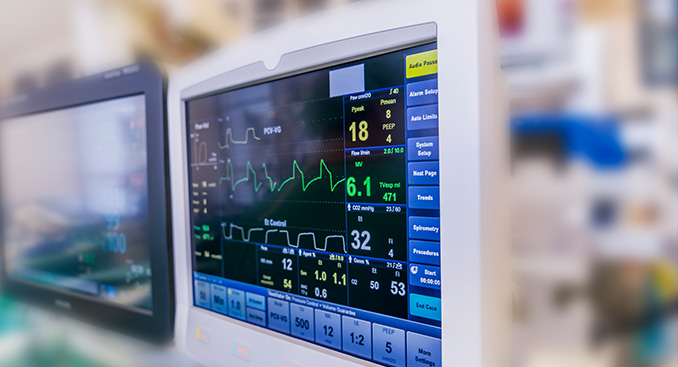- Community & News
- Heart
- Patient Stories
- Service Line
Common Surgical Heart Treatments

While cardiac diseases and conditions are often successfully treated through medication and lifestyle changes, sometimes surgery is required to ensure a healthy functioning heart. There is broad spectrum of surgical procedures available dependent on the patient, condition and often the severity of that condition. Kathryn O’Keefe, MD, a cardiothoracic surgeon with the TriHealth Heart Institute, sheds some light on a few of the more common surgical treatments, and what conditions they help to treat.
Coronary Bypass
The most common cardiac operation done in the U.S. is coronary bypass, with more than 400,000 procedures performed in 2010. The full name of the procedure is coronary artery bypass grafting, or CABG.
“When a patient has coronary artery disease, this procedure reroutes the blood flow surgically when stents or angioplasty are not possible,” says Dr. O’Keefe. “This is a revascularization produced to get better blood flow to the heart when the blood flow is rerouted around blockages. Generally, physicians will use the artery from behind the breastbone, and then vein from the patient’s leg.”
Dr. O’Keefe says the most common situation that she sees is patients with symptoms of angina with complex 3-vessel coronary artery disease. She added that most of the patients she operates on for bypass surgery also have risk factors for coronary artery disease such as diabetes, high blood pressure, high cholesterol, obesity, tobacco abuse, or a strong family history of coronary disease. She says many of patients that she sees for coronary artery disease have also been admitted to the hospital recently with chest pains or a heart attack.
“Patients with multi-vessel coronary disease with low heart function or diabetes benefit more in the long run from bypass surgery than from multi-vessel stenting,” she says. Recovery from this procedure takes a few months for most patients, but some are back to driving, grocery shopping, and cardiac rehab within four to six weeks.”
When a patient is being evaluated for bypass surgery, there are generally two options for the approach. The first is a sternotomy, which is a splitting of the breastbone to provide access to the heart, but some will be candidates for a minimally invasive, or robotic, approach.
“The primary factor in deciding the approach is the number of bypasses needed, says Dr. O’Keefe. “Other factors such as a patient’s size and anatomy are also important in determining if a minimally invasive approach is best.”
Heart Valve Repair and Replacement
Another common form of cardiac surgery is the repair or replacement of damaged heart valves. Valves can either be stenotic (narrowed and reduces blood flow to the body) or regurgitant (leaking and causing the heart to pump harder to maintain blood flow to the body). Either dysfunction causes strain to the heart and can lead to heart failure and other symptoms that negatively impact health.
When heart valves begin to fail, the heart beats harder to compensate for the reduced blood flow. Over time, valve disease may progress to a point that symptoms begin. Symptoms that a heart valve may not be functioning correctly include increasing shortness of breath, palpitations (skipped heartbeats), edema (ankle swelling), weakness, dizziness, quick weight gain, and/or chest pain. Initial testing usually includes an echocardiogram or ultrasound, and a referral from the cardiologist if surgery is necessary.
During minimally invasive cardiac surgery, patients are put on a heart-lung bypass machine via small incisions in the groin, and the heart is approached through a small incision on the chest wall, just under the breast. Through the small incisions, surgeons can repair and replace heart valves, perform bypass operations, and perform ablation procedures to correct irregular heart rhythms.
One of the most innovative procedures is a transcatheter aortic valve replacement, or TAVR. This procedure is specifically used to replace a diseased or stenotic aortic valve with a catheter. Mitral valves can also be repaired or replaced with catheter technology. Potential candidates for this procedure are evaluated in a valve clinic by a cardiologist, and if they are good candidates, and receive the procedure, are generally home less than 48 hours later.
Surgical Treatment of AFib
Atrial fibrillation, or AFib, affects more than 2.2 million Americans, and is an abnormal rhythm of the heart, which can cause the heart to pump less effectively. Chronic atrial fibrillation can cause permanent changes in the heart, leading to heart failure and an increased risk of stroke.
Many patients undergo catheter-based ablations for AFib, or are treated with medications, but still experience symptoms. These patients may be good candidates for minimally invasive thoracoscopic MAZE procedures, which use radiofrequency ablation and cryoablation to burn and freeze the pathways where the AFib originates. This procedure can be done in a minimally invasive way, with just a few small incisions on each side of the chest.
“The hospital stay is minimal, and most patients have a restored normal rhythm,” says Dr. O’Keefe. “At the TriHealth Heart Institute, we have the most comprehensive AFib treatment options in the city, and great collaboration between surgery and electrophysiology cardiologists.”
The TriHealth Heart Institute believes that the best way to approach any cardiac treatment option, whether it is for valve disease, coronary artery disease, or atrial fibrillation, is a multidisciplinary approach, with cardiologists and surgeons making decisions together about the best treatment options for patients, but the patient remains the most important member of that team and the treatment as to start with them.
“If you feel you are having any heart issues, it’s very important to your primary care physician or go to an emergency room<” Dr. O’Keefe says.
Related Articles
- Community & News
- Heart
- Patient Stories
- Service Line